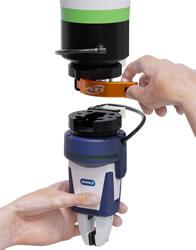Watch these robotic 'reindeer' from Boston Dynamics pull Santa's sleigh
Google to incubate its robotics and drone divisions under Google X
Four Market Forces That Will Shape Robotics Over The Next Year
'Rushing into robotics revolution without considering impact,' warn scientists
IREX - Meet the Japanese robots that do what humans can't
Father of Robotics Joseph F. Engelberger Dies at Age 90
Drone giant DJI launches crop-spraying drone
Think You Know Industrial Robots? Think Again
MIP Robotics Launches Its First Model of New Generation Industrial Robot "MIP Junior",
ABB's largest ever robot is 25 percent faster than competitor robots in high payload range
UCSD to create robots that see, think and do
Six-axis robotic arm called Eva, which weighs 2.3 kilograms and will cost $3,000
Rob Scharff's Soft Robotics 3D-printed hand responds to human grip
Robot Can Pick and Sort Fruit
Robots Learning Judo Techniques to Fall Down Without Exploding
Records 421 to 435 of 849
First | Previous | Next | Last
Industrial Robotics - Featured Product

